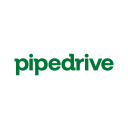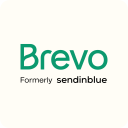ActiveCampaign vs ConvertKit compared: Choosing the right tool
- 01ActiveCampaign vs Kit (ex. ConvertKit): overview
- 02What's the difference between ActiveCampaign and Kit (ex. ConvertKit)?
- 03ActiveCampaign pros and cons
- 04Kit (ex. ConvertKit) pros and cons
- 05ActiveCampaign compared to Kit (ex. ConvertKit)
- 06Kit (ex. ConvertKit) compared to ActiveCampaign
- 07Features comparison
- 08ActiveCampaign vs Kit (ex. ConvertKit): Which is the best for your business?
- 09Promotions on Email Marketing software
- 10Alternatives to ActiveCampaign & Kit (ex. ConvertKit)
Save up to $1,610 on ActiveCampaign
Save up to $1,610 on ActiveCampaign
Whether you’re a small-scale creator or running a large online business, effective email marketing campaigns are crucial to your business’s success. Luckily, various tools are available to help you manage your email lists, craft engaging email campaigns, and gain valuable insights into their effectiveness.
In this article, we discuss two popular email marketing tools—ActiveCampaign vs ConvertKit. While both are designed to help you grow your audience via strategic email campaigns, the platforms target different audiences and, as a result, offer slightly different features. We look closer at each solution’s pros and cons and the main differences between them to help you decide which is better for your business.
ActiveCampaign vs Kit (ex. ConvertKit): overview
ActiveCampaign and ConvertKit are leading contenders in the realm of email marketing platforms, each offering distinct features and advantages tailored to different user requirements.
ActiveCampaign is noted for its powerful marketing automation capabilities and CRM features. It provides a comprehensive platform for managing and nurturing contacts, segmenting audiences, and automating complex email sequences. This makes it especially suitable for businesses looking for a more in-depth approach to their email marketing strategies. Conversely, ConvertKit is prized for its user-friendly design and focus on creators and content marketers. With its straightforward interface, it simplifies the process of creating and sending emails, allowing users to concentrate on content and engagement.
Now, let's delve into the ActiveCampaign vs. ConvertKit comparison to assist you in making an informed decision when it comes to choosing the right email marketing platform for your specific needs.
What's the difference between ActiveCampaign and Kit (ex. ConvertKit)?

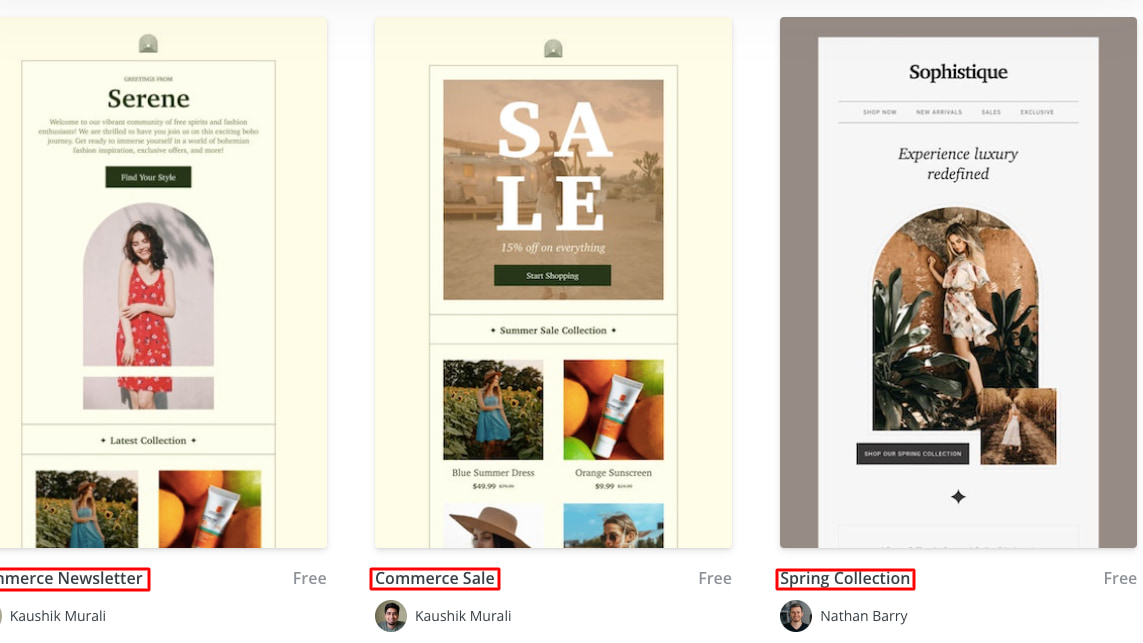
ActiveCampaign and Converkit share many standard features of an email marketing platform, including automation capabilities, advanced segmentation, and an array of integrations. However, a significant difference between the platforms lies in their target audiences, influencing the features they offer. ConvertKit is designed for creators, including bloggers, coaches, lifestyle business owners, podcasters, and authors. It has a simple user interface and a basic yet comprehensive set of features that allow beginners to set up an email marketing campaign in minutes. Compared to ConvertKit, ActiveCampaign caters to larger businesses and experienced online marketers wanting to turbocharge growth. The platform offers more advanced features and incorporates marketing, sales, and CRM capabilities to automate the sales process further. Access to these advanced features can involve a steeper learning curve and additional costs. However, these features make ActiveCampaign a powerful tool for growth.
Another key difference between ActiveCampaign and ConvertKit is their email templates. Templates are a great way to save time and ensure consistency when creating an email campaign. ActiveCampaign has over 250 email templates, which are available with every plan. These include templates for abandoned cart notifications and feedback requests. ConvertKit has only 3 native templates—starting point, classic, and HTML. There are also around 35 additional community-designed templates available on ConvertKit’s marketplace.
A final distinction is that ConvertKit offers an e-commerce feature to help creators monetize their work and sell digital products like ebooks, newsletters, and courses. This feature includes integrated payment processing. You can also use it to embed product pages in your emails and link ConvertKit Commerce to your other platforms to track their sales. This feature is available on all plans, including ConvertKit’s free plan, although transaction fees apply. ActiveCampaign takes a different approach to e-commerce, offering a range of integrations with apps like Shopify, WooCommerce, and Square rather than a built-in e-commerce feature.
ActiveCampaign pros and cons
What are the advantages of ActiveCampaign?
- Powerful automation: ActiveCampaign is renowned for its advanced automation capabilities, allowing users to create intricate workflows and trigger-based campaigns easily.
- CRM integration: It provides a built-in CRM that seamlessly integrates with the email marketing platform, streamlining the sales and marketing processes.
- Segmentation and personalization: Users can segment their audience based on various criteria and deliver highly personalized messages, improving engagement and conversions.
- User-friendly interface: Despite its advanced features, ActiveCampaign has an intuitive interface that makes it accessible to both beginners and seasoned marketers.
- Extensive integrations: ActiveCampaign can integrate with a wide range of third-party applications, from e-commerce platforms to web forms and beyond.
What are the disadvantages of ActiveCampaign?
- Pricing model: As your list size grows, the monthly cost can become relatively high, especially if you opt for the more advanced features.
- Steep learning curve: While user-friendly, the vast array of features and possibilities mean that there can be a steep learning curve for some users.
- Deliverability concerns: Some users have expressed concerns over email deliverability rates, although this can vary and is often dependent on various factors, including email content and list health.
- Limited native landing page builder: While ActiveCampaign offers a landing page builder, it might not be as advanced or flexible as some standalone solutions.
- Speed and performance: At times, the platform can be a bit slow, especially when working with large lists or complex automations.
Compare ActiveCampaign to other tools
Kit (ex. ConvertKit) pros and cons
What are the advantages of Kit (ex. ConvertKit)?
- Designed for creators: ConvertKit is specifically tailored for bloggers, podcasters, and other online creators, making it intuitive for this audience.
- Visual automation builder: The platform offers a visual builder for email sequences, making it easy to map out and understand automations.
- Simple UI: ConvertKit's user interface is clean and straightforward, making it accessible even to those new to email marketing.
- Flexible tagging and segmentation: ConvertKit allows for advanced tagging and segmentation of subscribers, ensuring that content can be highly targeted.
- Direct integration with popular platforms: ConvertKit integrates seamlessly with platforms like WordPress, WooCommerce, and others, allowing for easy content sharing and lead capture.
What are the disadvantages of Kit (ex. ConvertKit)?
- Limited design customization: ConvertKit emphasizes simplicity, which can sometimes mean limited design options for emails and landing pages compared to other platforms.
- No built-in CRM: Unlike some other email marketing platforms, ConvertKit does not have a built-in CRM for managing customer relationships outside of email interactions.
- Advanced features at higher plans: Some features, like advanced reporting or integrations, might only be available at higher-priced plans.
- Limited A/B testing: ConvertKit's A/B testing capabilities are primarily limited to subject lines, which might not be sufficient for those looking to conduct more in-depth tests.
- No email templates: ConvertKit promotes plain-text emails, meaning there's a lack of pre-designed templates compared to other platforms. Some users might miss the ability to create visually rich emails without customization.
Compare Kit (ex. ConvertKit) to other tools
ActiveCampaign compared to Kit (ex. ConvertKit)
ActiveCampaign and ConvertKit are popular email marketing platforms, each with unique features and target audiences. ActiveCampaign is known for its robust marketing automation capabilities and CRM integration. It's ideal for businesses looking to create complex, automated email sequences and manage contacts more comprehensively.
The choice between ActiveCampaign and ConvertKit depends on your business needs and technical proficiency, with ActiveCampaign catering to more advanced automation and CRM requirements, while ConvertKit is designed for a user-friendly experience for content-focused marketers.
Is ActiveCampaign better than Kit (ex. ConvertKit)?
Deciding whether ActiveCampaign surpasses ConvertKit depends on your specific email marketing objectives. ActiveCampaign excels in advanced marketing automation, robust CRM integration, and comprehensive features, making it an excellent choice for businesses with complex automation needs and a larger contact base.
The choice between the two should align with your email marketing goals, technical proficiency, and the level of automation and segmentation required. ActiveCampaign offers advanced features for businesses needing intricate email marketing solutions, while ConvertKit is tailored for those valuing simplicity and content-focused campaigns.
What is ActiveCampaign best used for?
ActiveCampaign is best used for businesses and marketers looking to elevate their email marketing and automation efforts. It excels in creating complex, data-driven automation workflows that nurture leads and engage customers effectively. The platform is particularly valuable for businesses seeking comprehensive customer relationship management (CRM) integration, making it easier to manage and segment contacts.
ActiveCampaign's advanced automation capabilities empower users to deliver personalized content at scale, increasing engagement and conversions. It's ideal for businesses focused on creating highly targeted email campaigns, automating repetitive tasks, and optimizing customer journeys to drive revenue growth and enhance customer relationships.
Can ActiveCampaign replace Kit (ex. ConvertKit)?
ActiveCampaign and ConvertKit serve different niches within the email marketing arena and are not direct replacements for each other. ActiveCampaign shines with its advanced marketing automation capabilities, CRM integration, and comprehensive features, making it a robust choice for businesses with complex email marketing needs and larger contact lists.
The decision to choose between them depends on your specific email marketing goals, technical proficiency, and the level of automation and segmentation you require. While ActiveCampaign can offer more advanced features, ConvertKit's simplicity may be preferable for those prioritizing ease of use and content-focused campaigns.
Is ActiveCampaign cheaper than Kit (ex. ConvertKit)?
The cost comparison between ActiveCampaign and ConvertKit depends on your email marketing needs and the size of your subscriber list. ActiveCampaign’s pricing structure offers various pricing tiers, and it can be cost-effective for smaller lists and basic features. However, as your subscriber count grows or if you need advanced automation and CRM integration, costs can increase significantly.
ConvertKit, on the other hand, is known for transparent pricing that's often competitive, making it attractive for smaller businesses and content creators. Ultimately, the cost-effectiveness of each platform depends on the specific features, subscriber counts, and email marketing goals of your business. It's essential to evaluate your budget and requirements to determine which platform aligns better with your financial considerations.
Is there a better Email Marketing software than ActiveCampaign?
Whether there's a "better" software than ActiveCampaign depends on your specific email marketing needs and objectives. ActiveCampaign offers a robust suite of features, including advanced automation and CRM integration.
However, alternatives to ActiveCampaign like Mailchimp, HubSpot, and GetResponse may be more suitable for certain businesses. HubSpot offers a comprehensive marketing platform, while Mailchimp is user-friendly and has a free plan. GetResponse emphasizes automation and landing pages. The choice of the "better" software hinges on your unique requirements, budget, and desired features. It's crucial to evaluate these factors to determine which tool aligns most closely with your email marketing goals.
90% off any annual plan for the first year on ActiveCampaign
Get 90% off any annual plan for the first year on ActiveCampaign and up to $1,610 savings with Secret.
Kit (ex. ConvertKit) compared to ActiveCampaign
ConvertKit and ActiveCampaign are popular email marketing platforms, each with its own strengths. ConvertKit is known for its user-friendliness and simplicity, making it a top choice for content creators, bloggers, and small businesses. It offers straightforward email marketing tools, easy automation, and customizable sign-up forms.
The choice between ConvertKit and ActiveCampaign should align with your specific email marketing needs, technical proficiency, and the level of automation you require. ConvertKit prioritizes a user-friendly experience for content-focused marketers, while ActiveCampaign offers advanced automation and CRM integration for businesses with more complex email marketing requirements.
Is Kit (ex. ConvertKit) better than ActiveCampaign?
Choosing between ConvertKit and ActiveCampaign depends on your email marketing priorities. ConvertKit, while user-friendly, is more focused on content creators and bloggers. It emphasizes simplicity and offers features like landing pages and customizable subscription forms, making it suitable for those who prioritize content-driven marketing.
Your choice should align with your specific goals. If advanced automation and data analysis are vital, ActiveCampaign may be the better fit. ConvertKit, on the other hand, suits those emphasizing content creation and engagement.
What is Kit (ex. ConvertKit) best used for?
ConvertKit is best used by content creators, bloggers, and small businesses looking to engage their audience through email marketing. It excels in simplifying email campaign management and nurturing relationships with subscribers. ConvertKit's user-friendly interface allows users to easily create and customize email content, as well as set up automated sequences. It also offers intuitive segmentation features to target specific subscriber groups effectively.
ConvertKit's focus on content-driven marketing makes it an ideal choice for those who prioritize delivering valuable content to their audience, whether it's in the form of newsletters, courses, or blog updates. It's a versatile tool for building and nurturing connections with your subscribers.
Can Kit (ex. ConvertKit) replace ActiveCampaign?
ConvertKit and ActiveCampaign cater to different niches within the email marketing space and are not direct replacements for each other. ConvertKit is ideal for content creators, bloggers, and small businesses, focusing on simplicity and user-friendliness. It excels in delivering content-driven email marketing.
The decision to choose between them depends on your specific email marketing goals, technical proficiency, and the level of automation and contact management you require. While ConvertKit may offer simplicity and content-focused features, ActiveCampaign provides advanced capabilities for businesses seeking intricate automation workflows and contact management.
Is Kit (ex. ConvertKit) cheaper than ActiveCampaign?
The cost comparison between ConvertKit and ActiveCampaign depends on your email marketing needs and the size of your subscriber list. ConvertKit is known for its transparent and competitive pricing, making it attractive for smaller businesses, content creators, and bloggers. It offers straightforward pricing tiers without hidden costs.
ActiveCampaign, on the other hand, offers various pricing plans, and while it can be cost-effective for smaller lists and basic features, costs can increase as your subscriber count grows or if you require advanced automation and CRM integration.
The cost-effectiveness of each platform hinges on the specific features, subscriber counts, and email marketing goals of your business. It's essential to evaluate your budget and requirements to determine which platform aligns better with your financial considerations.
Is there a better Email Marketing software than Kit (ex. ConvertKit)?
Deciding whether there's a superior software to ConvertKit relies on your distinct email marketing requirements and objectives. Various alternatives are tailored to diverse business needs.
Alternatives to ConvertKit include ActiveCampaign, Mailchimp, HubSpot, and GetResponse, with each having its own strengths. GetResponse, for instance, places a focus on automation and landing pages. The choice of the optimal software largely hinges on your individual circumstances, budget, and feature preferences. Thoroughly evaluating these factors is crucial in selecting the tool that best aligns with your email marketing goals
Features comparison
ActiveCampaign Leads Over ConvertKit in Integration Variety

In the domain of integration capabilities, both ActiveCampaign and ConvertKit offer robust options for connecting with a wide range of tools across various business aspects. However, ActiveCampaign takes a substantial lead by providing access to over 870 possible integrations, dwarfing ConvertKit's integration offering.
This extensive array of integrations allows users to seamlessly connect ActiveCampaign with a multitude of marketing, CRM, social media, and e-commerce platforms. For instance, ActiveCampaign integrates smoothly with popular applications such as Salesforce, Shopify, and Facebook Ads, enabling users to streamline their workflows and consolidate their data.
While ConvertKit may offer fewer integrations in comparison, it still provides connections with essential and high-value applications that many businesses commonly use. These integrations allow ConvertKit users to access core functionalities while retaining simplicity and ease of use.
ActiveCampaign Outperforms ConvertKit in Personalized Email Advertising
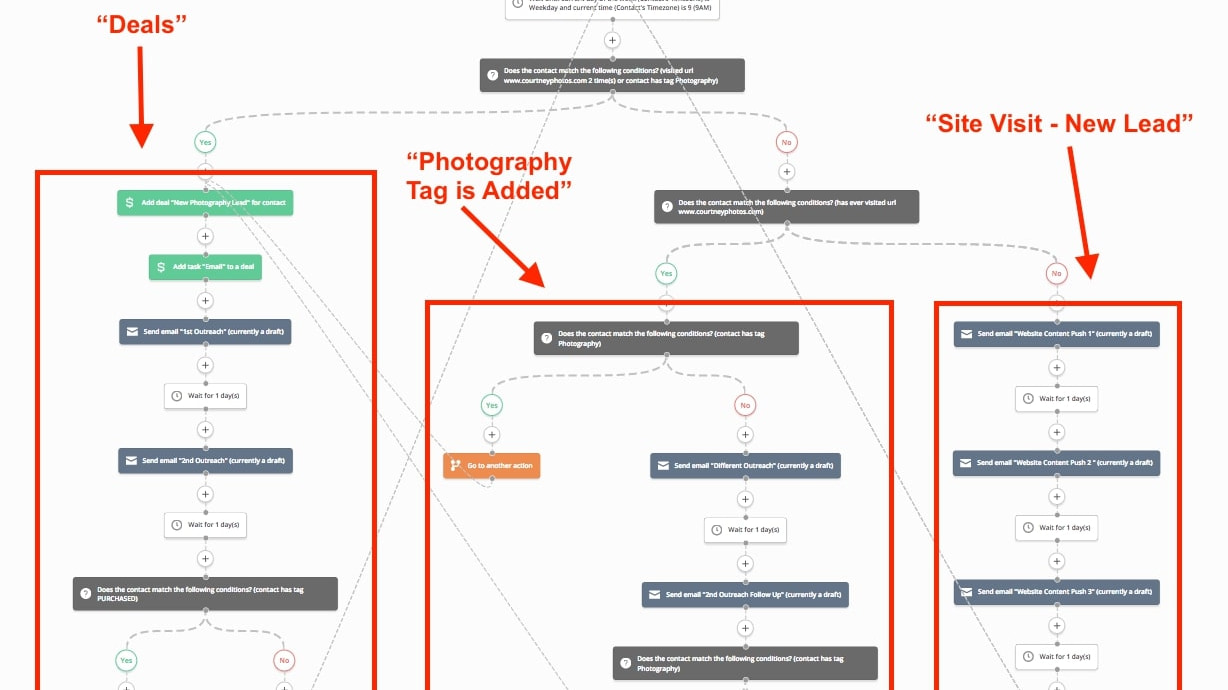
ActiveCampaign distinguishes itself by providing a more customer-centric experience compared to ConvertKit. ActiveCampaign's strength lies in its advanced personalization capabilities, enabling businesses to create highly tailored and targeted email campaigns.
ActiveCampaign empowers users to segment their audience effectively based on various criteria, such as behavior, demographics, and engagement history. For example, you can send personalized recommendations to specific customer segments or re-engage inactive subscribers with tailored content.
While ConvertKit does offer subscriber segmentation and basic email automation, it lacks the advanced personalization features that come naturally with ActiveCampaign. Therefore, for businesses seeking a more customer-centric approach to email marketing, ActiveCampaign's sophisticated personalization capabilities make it the superior choice.
ConvertKit Excels at Detailed Reporting Compared to ActiveCampaign
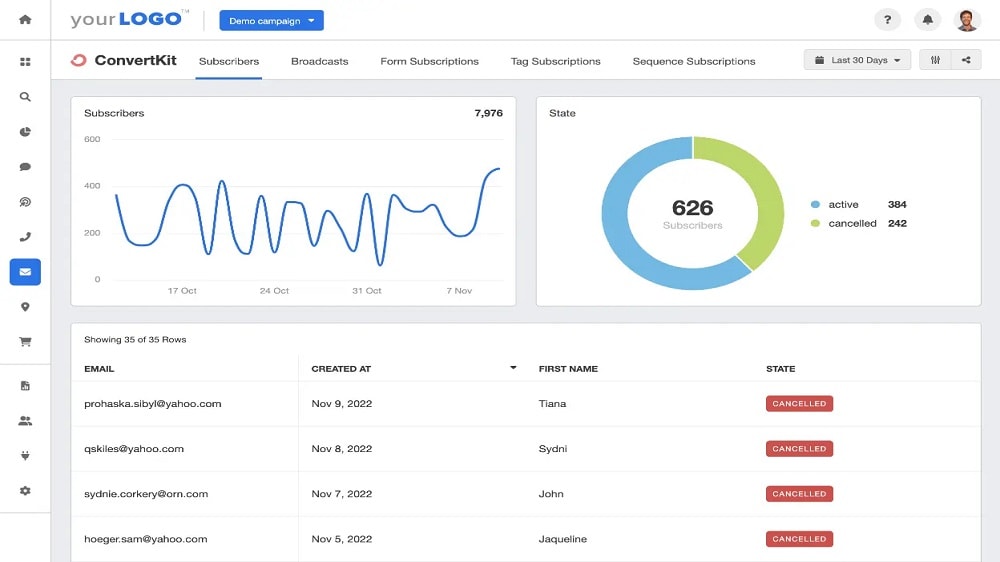
In the domain of reporting and analytics, ConvertKit stands out by offering a robust suite of tools that empower users to make informed, data-driven decisions. ConvertKit's analytics delve deep into email campaign performance, tracking essential metrics such as open rates, click-through rates, and conversion metrics.
For instance, ConvertKit provides detailed insights into subscriber engagement, enabling users to identify which emails resonate most with their audience. Users can also analyze the effectiveness of different email sequences and the performance of specific automation workflows. This granularity of data empowers businesses to refine their email marketing strategies continually.
While ActiveCampaign also offers reporting features, ConvertKit's comprehensive analytics give it a distinct advantage. ActiveCampaign's reporting may not provide the same level of granularity or ease of use for tracking key email metrics, which could hinder users seeking detailed insights for optimization.
Both ActiveCampaign and ConvertKit Offer Superb Marketing Automation

Both ActiveCampaign and ConvertKit stand as powerful marketing automation solutions, each with its unique strengths. ActiveCampaign excels in fine-tuning contact list management and efficient automation, offering a range of features to optimize user engagement.
ActiveCampaign enables users to create sophisticated automation workflows that trigger based on subscriber behaviors, such as email opens, clicks, or website visits. For instance, if a subscriber clicks on a specific product link, ActiveCampaign can automatically send follow-up emails with tailored product recommendations. This precision in automation enhances engagement and conversion rates.
On the other hand, ConvertKit also provides automation capabilities with a focus on automated email sequences based on pre-set subscriber behaviors. For example, ConvertKit allows users to set up automated drip campaigns that nurture leads over time, providing them with relevant content and offers.
ActiveCampaign's AI-Powered Sales Forecast Holds an Edge Over ConvertKit
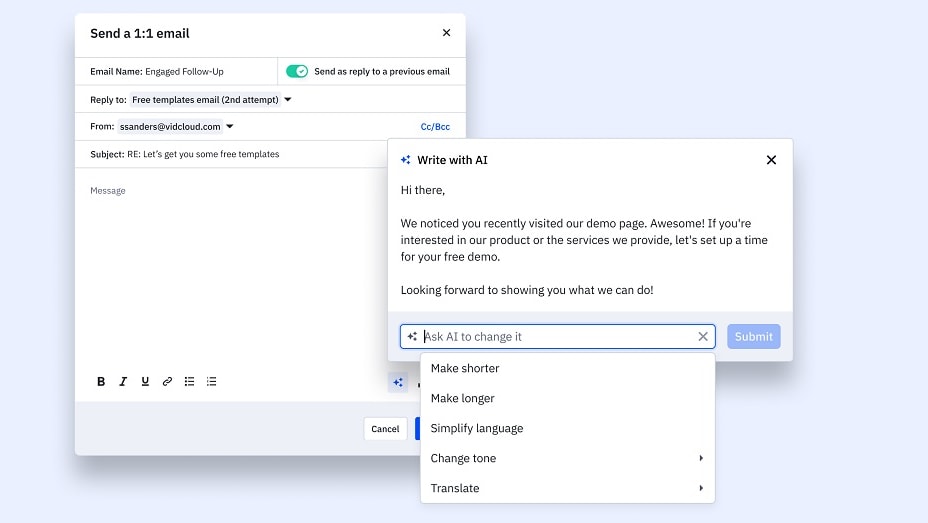
ActiveCampaign distinguishes itself with an AI-powered feature that provides a significant advantage over ConvertKit. ActiveCampaign's unique sales forecast capability leverages artificial intelligence to analyze customer behavior, historical data, and various scenarios to predict future sales accurately. This predictive insight is invaluable for businesses, as it informs decision-making, allows for more precise goal setting, and enables proactive strategies.
For example, ActiveCampaign can identify trends in customer interactions and predict which products or services are likely to have higher demand in the coming months. This empowers businesses to adjust their marketing and sales strategies accordingly, ensuring that they are well-prepared to meet customer needs and capitalize on emerging opportunities.
In contrast, ConvertKit lacks a comparable AI-driven sales forecasting feature, leaving ActiveCampaign ahead in this specific aspect. For businesses that prioritize data-driven decision-making and accurate sales projections, ActiveCampaign's AI-powered sales forecasting offers a valuable tool to optimize sales strategies and enhance overall performance.
ConvertKit's Dedicated Landing Page Builder Outshines ActiveCampaign
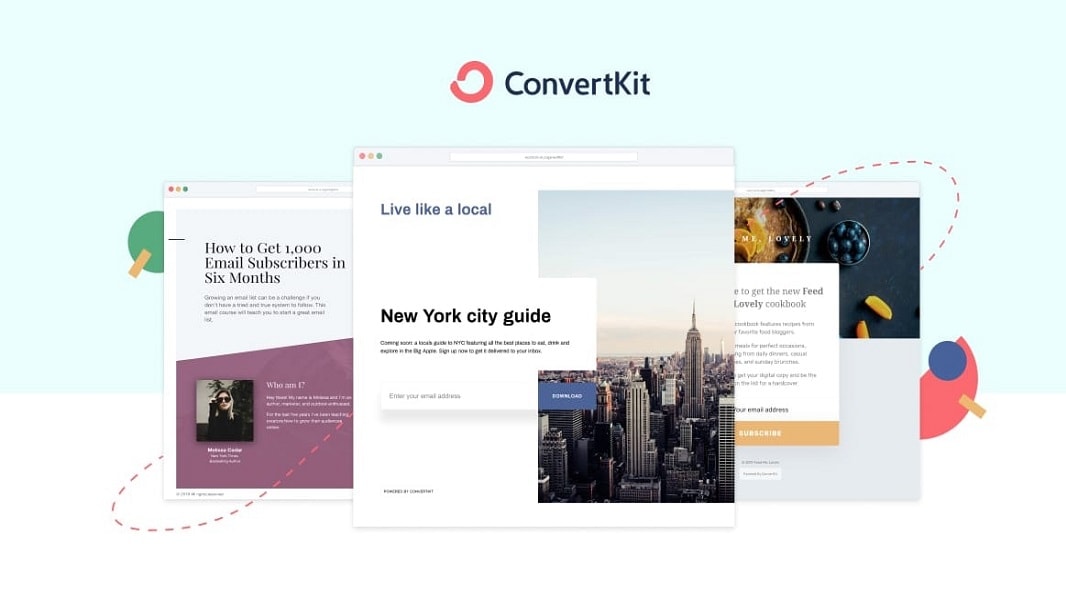
ConvertKit takes a decisive lead over ActiveCampaign by offering users the capability to effortlessly design dedicated landing pages. This feature empowers businesses to capture leads, promote products, or host webinars with ease, a functionality notably absent in ActiveCampaign.
ConvertKit's landing page builder stands out for its simplicity and functionality. It enables users to create visually appealing and conversion-focused landing pages without requiring extensive design or coding skills. This user-friendly approach ensures that businesses can quickly launch effective landing pages to support lead generation and product promotion efforts.
In contrast, ActiveCampaign, while a robust tool for marketing automation and email marketing, does not offer a dedicated landing page creation feature. This omission could be a limiting factor for businesses seeking an all-in-one solution for their marketing needs.
ConvertKit Excels Ahead of ActiveCampaign for User-Friendliness

Both ActiveCampaign and ConvertKit offer intuitive interfaces, making them accessible to users of varying technical expertise. However, ConvertKit gains a notable advantage for its exceptional simplicity and user-guidance features.
ConvertKit's dashboard is renowned for its clean and straightforward design, which streamlines navigation. This minimalist approach eliminates unnecessary clutter, making it easy for users to focus on their email marketing tasks without distractions.
Moreover, ConvertKit provides detailed step-by-step guides and tutorials that empower users, especially beginners, to maximize the platform's capabilities. These resources assist in setting up automation workflows, creating email campaigns, and effectively utilizing the tool's features.
While ActiveCampaign is also user-friendly, its interface may appear slightly more intricate to some users due to the range of advanced automation and segmentation options it offers. Therefore, for those who prioritize an uncomplicated user experience and extensive guidance, ConvertKit emerges as the preferred choice for streamlined email marketing.
Subscribe to our newsletters.
No FOMO here. Stay up-to-date on all the latest deals and news with our monthly newsletter straight to your inbox like 123,000+ entrepreneurs (+ Get 10% off on on our Premium Membership!)
ActiveCampaign vs Kit (ex. ConvertKit): Which is the best for your business?
ActiveCampaign is the best tool for you if:
- You're seeking an all-in-one marketing automation platform, adept at email campaigns, CRM, and customer journey mapping.
- Personalization is paramount; it tailors user experiences based on behavior, ensuring impactful and relevant customer touchpoints.
- You prioritize data-driven decisions; its analytics tools offer insights into campaign performance, user engagement, and conversion metrics.
- Scalability is key; from small startups to large enterprises, its diverse feature set meets evolving business needs effortlessly.
- Integration flexibility matters; seamlessly connect with countless apps, optimizing workflow efficiency and data synchronization.
Kit (ex. ConvertKit) is the best tool for you if:
- You're a content creator or blogger aiming for targeted email marketing campaigns and seamless subscriber management tools.
- Ease of use is essential; its intuitive interface allows quick setup, automations, and visually appealing email designs.
- You appreciate granular segmentation; categorize subscribers based on actions, ensuring content relevance and higher engagement rates.
- Landing pages and forms are crucial; it offers customizable templates to capture leads without needing external tools.
- You want robust support; with educational resources and responsive customer service, you're never left without guidance.
Alternatives to ActiveCampaign & Kit (ex. ConvertKit)
Promotions on Email Marketing software
Start saving on the best SaaS with Secret.
Secret has already helped tens of thousands of startups save millions on the best SaaS like ActiveCampaign, Kit (ex. ConvertKit) & many more. Join Secret now to buy software the smart way.







